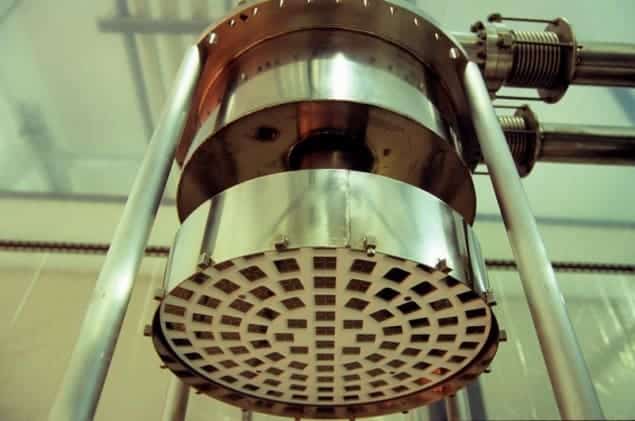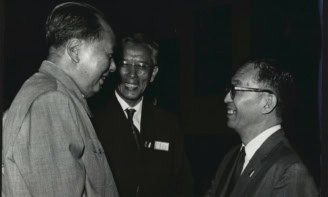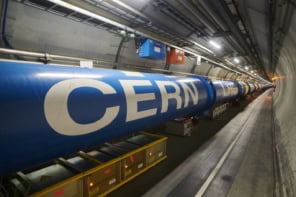
A war of words has broken out in the dark-matter community over a report posted on the arXiv preprint server earlier this week. The preprint from the XENON100 collaboration poured cold water on claims that dark matter has been detected by two other experiments – but now the report itself has been attacked by other researchers in the field.
On Monday the XENON100 collaboration published an analysis of the first experimental results from its dark-matter detector. It reported no evidence of dark matter, the substance thought to constitute over 80% of mass in the universe. The experiment covered a similar parameter range as dark-matter searches DAMA and CoGeNT, which have previously claimed possible evidence for dark matter. As a result, the XENON100 team concluded that both the DAMA and CoGeNT evidence could be excluded.
But now the DAMA and CoGeNT collaborations claim that the XENON100 researchers’ analysis is flawed, and that their original evidence for dark matter should remain intact. Indeed, the CoGeNT collaboration is even requesting that the XENON100 collaboration retract its preprint. “These results cannot be defended,” CoGeNT spokesperson Juan Collar of the University of Chicago told physicsworld.com.
Flash evidence
The past couple of years have seen several experiments turn up evidence for dark matter. In 2008 the DAMA collaboration, based at the Gran Sasso laboratory in Italy, found what seemed to be the tell-tale flashes of dark-matter particles – known as weakly interacting massive particles, or WIMPs – colliding with sodium-iodide nuclei buried in huge underground detectors. The flashes were less frequent in winter than summer, suggesting that the Earth’s orbit was periodically taking our planet with and against our galaxy’s prevailing “wind” of dark matter.
Earlier this year, the CoGeNT collaboration based in the Soudan underground laboratory in Minnesota, US, reported more tantalizing evidence. It had recorded hundreds of charge bursts inside a germanium detector, consistent with WIMPs striking the germanium nuclei.
The XENON100 experiment – also in Gran Sasso – seemed to have the potential to uphold or overturn such results. Using liquid xenon as a detector material, which is much heavier than sodium-iodide and therefore more susceptible to WIMP collisions, the researchers needed only take data over a matter of days. Moreover, they claim that it has the lowest background noise of any dark-matter experiment.
In their preprint, the XENON100 researchers explained how over an 11 day period last year they found no WIMP collisions. In particular, they described an upper limit on the possible WIMP mass as a function of the probability or “cross section” of the WIMP interaction. This upper limit excludes the fairly low-mass WIMPs of between 7 and 20 GeV, as seen by DAMA and CoGeNT.
Sagging efficiency?
But the CoGeNT and DAMA collaborations believe that the XENON100 results are unreliable at such low energies. They say that the efficiency of the XENON100 detectors to record dark-matter interactions, which the XENON100 collaboration calculates to be constant, in fact drops with decreasing energy. If true, this would mean that the xenon detectors are unable to rule out DAMA and CoGeNT’s evidence for low-mass WIMPs.
We invite the XENON100 researchers to reconsider their claims Dan McKinsey, Yale University
“The onus of unequivocally demonstrating the existence of [loss-mass WIMP interactions] is on the XENON100 collaboration,” wrote CoGeNT’s Collar together with Dan McKinsey, a dark-matter physicist at Yale University, in a comment uploaded to the arXiv server yesterday. “Attempts to substitute this with a biased analysis represent a lack of consideration for the many efforts made by other dark-matter researchers working towards similar ends. We invite the XENON100 researchers to reconsider their claims.”
Rita Bernabei, spokesperson for the DAMA collaboration, also rejects the XENON collaboration’s conclusions. “[Its] result has no impact on the [DAMA] evidence for dark-matter particles in the galactic halo,” she says. “In fact, no direct model-independent comparison is possible among experiments that use different target materials and approaches, and have different sensitivities to different dark-matter candidates and scenarios.”
For me the best answer is not in words but in measurements Elena Aprile, XENON100 collaboration
But Elena Aprile, spokesperson for XENON100, thinks Collar’s claims about efficiency are wrong. “For me the best answer is not in words but in measurements,” she explains. “I understand that he feels not too good about our results, [and] in the end he can say all he wants, but there is simply no sign of hypothetical 7 GeV WIMPs in our data, and we state that very clearly. It is not about [the detector efficiency], on which they dwell for most of their response with some misleading and arbitrary statements. There is absolutely no reason why we should consider McKinsey data more than our own.”
The real test of the XENON100 collaboration’s analysis will be its peer review in Physical Review Letters, where they have submitted it for publication. In the meantime, they are preparing a response to the criticisms which they will soon upload to arXiv.
The XENON100 preprint can be read at arXiv: 1005.0380 and the comment at arXiv: 1005.0838.



